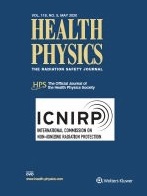
ICNIRP Publications 2020

Abstract—In this statement, the International Commission on Non-Ionizing Radiation Protection (ICNIRP) presents its principles for protection against adverse health effects from exposure to non-ionizing radiation. These are based upon the principles for protection against ionizing radiation of the International Commission for Radiological Protection (ICRP) in order to come to a comprehensive and consistent system of protection throughout the entire electromagnetic spectrum. The statement further contains information about ICNIRP and the processes it uses in setting exposure guidelines. Health Phys. 118(5):477–482; 2020
Key words: International Commission on Non Ionizing Radiation Protection; health effects; safety standards; radiation, non-ionizing
https://www.icnirp.org/cms/upload/publications/ICNIRPprinciples2020.pdf
Excerpt
Basic Premise
ICNIRP aims to provide advice on protection against adverse health effects from both short- and long-term exposures to non-ionizing radiation and uses the WHO’s definition of health: “Health is a state of complete physical, mental and social well-being and not merely the absence of disease or infirmity.” 4 ICNIRP’s advice is based on a detailed evaluation of the scientific evidence. Scientifically substantiated adverse health effects (see the Appendix) are identified and exposure limits are developed to prevent these. For the estimation of exposure limits, ICNIRP generally assumes worst-case situations and takes uncertainties in the scientific evidence into consideration.
In general, people with medical conditions are included in the general public and the guidelines are protective for them. It should be noted, however, that the exposure guidelines are not meant to be protective for people with certain clinically substantiated diseases or conditions that may make them more susceptible to harm from non-ionizing radiation, e.g., patients with Xeroderma pigmentosa, or individuals taking photosensitizing medications.
A biological effect is any biological, physical, or chemical change induced in a biological system. Living organisms have repair and feedback mechanisms that are designed to maintain homeostasis, the balanced situation in which a biological system can properly function. If the capacity of these compensatory mechanisms is overwhelmed or exhausted, this may result in adverse health effects. The ICNIRP guidelines are not intended to protect against biological effects as such, unless there is also an associated adverse health effect.
However, it is not always easy to draw a clear distinction between biological and adverse health effects, and indeed this can vary depending on individual susceptibility to specific situations. An example is sensory effects from nonionizing radiation exposures under certain circumstances, such as a tingling sensation resulting from peripheral nerve stimulation by electric or magnetic fields; magnetophosphenes (light flickering sensations in the periphery of the visual field) resulting from stimulation of the retina by electric fields induced by exposure to low-frequency magnetic fields; and microwave hearing resulting from thermoelastic waves due to expansion of soft tissues in the head which travel via bone conduction to the inner ear. Such perceptions may sometimes lead to discomfort and annoyance. ICNIRP does not consider discomfort and annoyance to be adverse health effects by themselves, but, in some cases, annoyance may lead to adverse health effects by compromising well-being. The exposure circumstances under which discomfort and annoyance occur vary between individuals.
